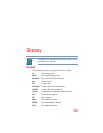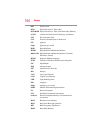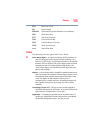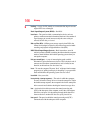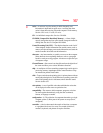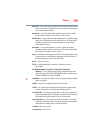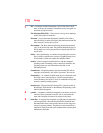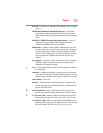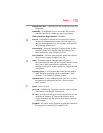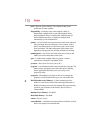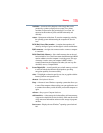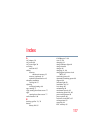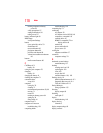
Glossary
171
hardware—The physical components of a computer system. Compare
software.
HDMI (High-Definition Multimedia Interface)—An interface
used to transmit high quality audio and video signal via a single
cable in digital format, providing better picture quality than analog
signal.
HDMI-CEC (HDMI Consumer Electronics Control)—One A/V
component can control another while using this function, if
connected with HDMI cables. See also HDMI.
Hibernation—A feature of many Toshiba computers that saves to the
internal storage drive the current state of your work, including all
open files and programs, when you turn the computer off. When
you turn on the computer again, your work is returned to the same
state it was when the computer was turned off. See also Sleep,
Suspend.
hot swapping—The ability to add or remove devices from a computer
while the computer is running and have the operating system
automatically recognize the change.
I
icon—A small image displayed on the screen that represents a function,
file, or program.
interlaced—A method of refreshing a computer screen, in which only
every other line of pixels is refreshed. Interlaced monitors take two
passes to create a complete screen image. Compare non-interlaced.
internal device—See device.
Internet—The decentralized, world-wide network of computers that
provides electronic mail, the World Wide Web, and other services.
See also World Wide Web.
K
keyboard shortcut—A key or combination of keys that you use to
perform a task instead of using a pointing device such as a mouse.
L
L1 (level one) cache—Memory cache built into the processor to help
improve processing speed. See also cache, CPU cache, L2 cache.
L2 (level two) cache—Memory cache installed on the motherboard to
help improve processing speed. It is slower than L1 cache and faster
than main memory. See also cache, CPU cache, L1 cache.



